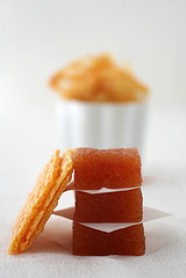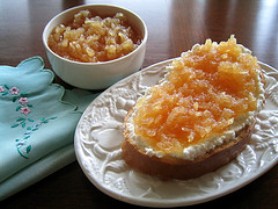Related to the apple, pear and rose, the quince is an often overlooked fruit, although not by the Owl and the Pussycat in Edward Lear’s famous verse where they “dined on mince and slices of quince which they ate with a runcible spoon”.
History
Cultivated for over three thousand years, the quince is a versatile ingredient with an intense perfume. The Romans called it melimelum, meaning honey apple, due to its honey-like flavor and scent. Historians believe that the Ancient Greek apple given by Paris to Aphrodite, the goddess of love, was actually a quince. It is mentioned widely in English medieval cookery texts. For example, the dish, chardequince, which had been a sweet fruit paste made of quince that was thickened with eggs.

Around the World
From Turkey to South America and from Germany to South Africa the quince is enjoyed the world over. Hindus in India pound quince, onions, peppers, salt and orange juice together to make a quince sambal. Stews of lamb, duck and chicken are made exotic by Moroccans, who add them to tagines, while Iranians add them in khoreshts. In the Balkan states, they enjoy the local tipple of quince brandy, whereas the Germans happily quaff away their fill of quince juice. The original marmalade stems from Portuguese quince jam, marmelo, and next door in Spain, they cook quince into a reddish jello-like block, which they call membrillo and serve it with Manchego cheese.

In the Kitchen
In the US, the quinces that we find in the local stores are mainly imported from Argentina and they are too hard and sour to eat raw. They have a firm, pale-yellow skin and a lumpy shape but are intensely fragrant and once were the original room-fresheners. After peeling they can be roasted, baked or stewed but they need to be cooked for up to an hour to soften their golden flesh, which then turns red. They are packed full of pectin and the juices thicken into a lovely, honeyed syrup, which is why they are so often used to make jams and jellies. In fact, any recipe calling for an apple or pear can be substituted by a quince. An ordinary crumble can be given an unexpected flavor with the addition of quince; a quince and bramley sauce served with pork, would counteract any greasiness; and a homely apple pie could become more sensational with a touch of quince. The possibilities for quince seem never ending and unlike the owl and the pussycat, you don’t even have to eat it with a runcible spoon.

Photos courtesy of Picaddict, binnur and beemine - Flickr